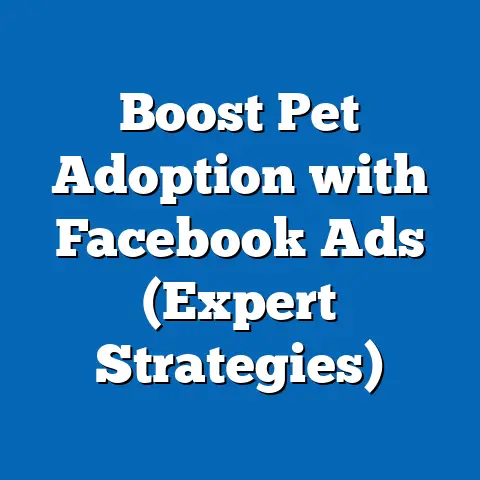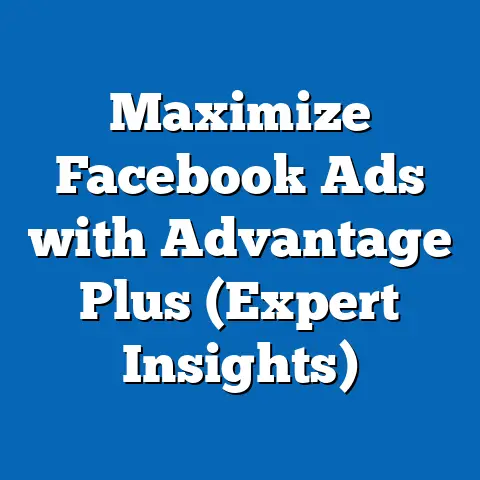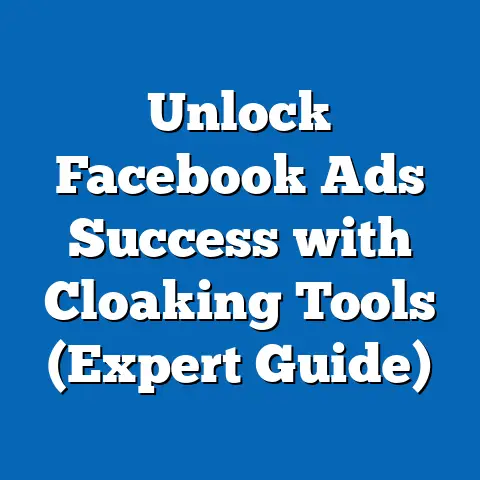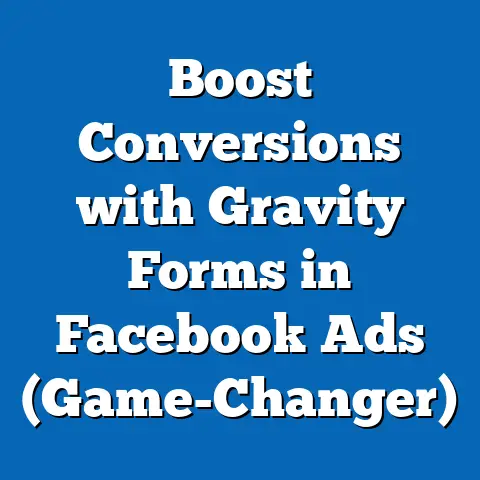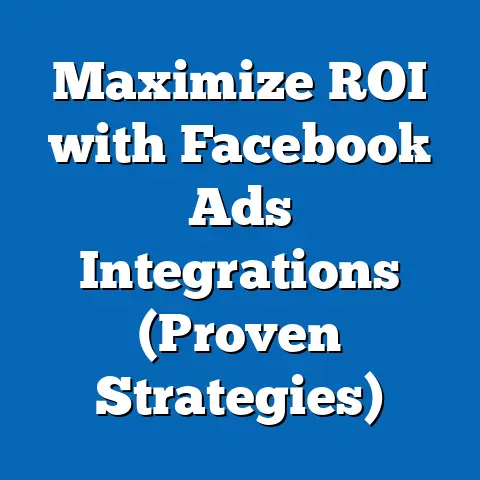Elevate Ads: Transform Twitter to Facebook (Strategic Shift)
First impressions matter, especially in the fast-paced world of advertising. Those initial few seconds are crucial – they can either capture your audience’s attention or send them scrolling past your carefully crafted message. In my years of experience in digital marketing, I’ve seen countless campaigns succeed or fail based solely on that initial impact. That’s why I believe in the power of strategic adaptation, especially when moving between platforms with vastly different landscapes.
Today, I want to talk about “Elevate Ads,” a strategic approach to transitioning your advertising efforts from Twitter (now X) to Facebook (Meta). While both platforms offer incredible reach, their users, engagement styles, and even the very fabric of their communities are fundamentally different. Treating them the same is like trying to fit a square peg in a round hole – it simply won’t work.
This article will guide you through understanding these nuances, crafting effective Facebook ads, strategically transitioning your existing campaigns, and measuring your success. The central idea? That a well-executed transformation of your advertising strategies from Twitter to Facebook can dramatically boost your brand visibility and, more importantly, drive meaningful engagement with your target audience. Let’s dive in!
Understanding the Platforms
Before you even think about copying and pasting your Twitter ads onto Facebook, you need to understand the fundamental differences between these two giants. They aren’t interchangeable tools; they’re unique ecosystems.
Overview of Twitter Advertising (Now X)
Twitter (now X) advertising, at its core, thrives on brevity and real-time engagement. Think of it as a constant stream of consciousness where users are looking for the latest news, hot takes, and trending topics.
- Ad Formats: Twitter’s ad formats primarily consist of Promoted Tweets (which look like regular tweets but are paid for), Promoted Trends (which put your topic at the top of the trending list), and Promoted Accounts (designed to gain followers).
- User Engagement: User engagement is fast-paced and reactive. People retweet, like, and reply to tweets in the moment, often driven by current events and viral content.
- Typical Audience: The Twitter audience tends to be younger, more news-oriented, and more likely to engage with brands in a public forum. They value speed and authenticity.
I’ve found that Twitter is fantastic for quick announcements, participating in trending conversations, and driving immediate action. For example, I once ran a campaign for a local coffee shop offering a discount on “National Coffee Day” – the quick, timely nature of the tweet drove significant foot traffic that day.
Overview of Facebook Advertising
Facebook, on the other hand, is a more curated and community-focused platform. It’s where people connect with friends and family, join groups based on shared interests, and consume a wider range of content formats.
- Ad Formats: Facebook boasts a much more diverse range of ad formats, including Carousel Ads (showcasing multiple images or videos), Video Ads (perfect for storytelling), Stories Ads (immersive, full-screen experiences), and Collection Ads (designed for e-commerce).
- User Engagement: User engagement is often more considered and less reactive than on Twitter. People comment on posts, share them with their networks, and participate in discussions within groups.
- Typical Audience: The Facebook audience is broader and more diverse in age and interests. They’re often looking for connection, entertainment, and solutions to their problems.
I’ve seen incredible success using Facebook for long-term brand building and nurturing leads. I recall a campaign for a financial services company that used a series of video ads to explain complex investment concepts in an easy-to-understand way. This built trust and ultimately led to a significant increase in qualified leads.
Comparison of Audience Engagement
The key difference lies in how users engage. Twitter is about instant reactions and public conversations. Facebook is about building communities, sharing personal experiences, and engaging with content in a more private setting.
This has huge implications for advertisers. On Twitter, your ad needs to grab attention in a split second and offer immediate value. On Facebook, you have more time to tell a story, build a relationship, and create a lasting impression. Think of it this way: Twitter is like shouting from a rooftop, while Facebook is like having a conversation in a living room.
Takeaway: Understand your audience’s mindset on each platform. What are they looking for? What kind of content resonates with them? Tailor your approach accordingly.
Crafting Effective Ads for Facebook
Now that you understand the Facebook landscape, let’s talk about crafting ads that actually work. It’s not just about having a good product or service; it’s about presenting it in a way that resonates with the Facebook audience.
Ad Design and Creativity
Visual appeal is paramount on Facebook. People are scrolling through their feeds at lightning speed, so your ad needs to stop them in their tracks.
- High-Quality Images and Videos: Use professional-grade visuals that are clear, engaging, and relevant to your message. Avoid blurry photos or amateurish videos.
- Eye-Catching Design: Use bold colors, interesting typography, and creative layouts to make your ad stand out.
- Mobile Optimization: Remember that most Facebook users are on mobile devices, so make sure your ad looks great on a small screen.
I’ve seen firsthand how a well-designed ad can dramatically improve results. I once worked with a local bakery that had beautiful product photos, but they weren’t using them effectively in their Facebook ads. We redesigned their ads with larger, more vibrant images, and their click-through rate (CTR) increased by over 50%!
Here’s a great example: A clothing brand I worked with used a series of user-generated content (UGC) photos and videos in their Facebook ads. These authentic, relatable visuals resonated far better with the audience than their professionally produced content.
Messaging and Tone
Your message needs to be tailored to the Facebook audience. They’re often looking for connection, entertainment, and solutions to their problems.
- Storytelling: Use storytelling to connect with your audience on an emotional level. Share your brand’s story, your customer’s stories, or stories that resonate with their values.
- Value Proposition: Clearly communicate the value of your product or service. What problem does it solve? How will it improve their lives?
- Call to Action: Tell people what you want them to do. Use clear and concise calls to action like “Shop Now,” “Learn More,” or “Sign Up.”
I always tell my clients to think about their ideal customer and write their ads as if they’re speaking directly to that person. What are their hopes, dreams, and fears? How can your product or service help them achieve their goals?
Targeting Strategies
Facebook’s advanced targeting options are its superpower. You can target your ads based on demographics, interests, behaviors, and more.
- Demographic Targeting: Target your ads based on age, gender, location, education, and other demographic factors.
- Interest-Based Targeting: Target your ads based on people’s interests, hobbies, and passions.
- Behavioral Targeting: Target your ads based on people’s online behaviors, such as their purchase history or the pages they’ve liked.
- Lookalike Audiences: Create lookalike audiences based on your existing customers. Facebook will find people who share similar characteristics and behaviors.
- Custom Audiences: Upload your customer list and target your ads specifically to those people.
I once ran a campaign for a local gym that targeted people who had expressed interest in fitness, healthy eating, and weight loss. We also created a lookalike audience based on their existing members. The results were phenomenal – they saw a significant increase in new memberships.
Takeaway: Don’t just throw your ads out there and hope for the best. Take the time to understand your target audience and use Facebook’s targeting options to reach the right people with the right message.
Transitioning Strategies from Twitter to Facebook
Now comes the tricky part: taking what you’ve learned on Twitter and adapting it for Facebook. It’s not a simple copy-paste job; it requires careful consideration and strategic adjustments.
Identifying Core Messages
Not all of your Twitter content will translate well to Facebook. You need to identify the core messages that resonate with your audience and adapt them accordingly.
- Analyze Twitter Engagement Metrics: Look at which tweets performed well on Twitter. What topics, themes, and formats resonated with your audience?
- Identify Universal Themes: Are there any universal themes that connect your brand to your audience, regardless of platform?
- Focus on Value: What value do you offer to your audience? How can you communicate that value in a way that resonates with Facebook users?
I recommend creating a spreadsheet and listing all of your top-performing tweets. Then, analyze each tweet and identify the key elements that made it successful. Was it the humor? The timeliness? The value proposition?
Ad Format Adaptation
You’ll need to adapt your Twitter ad formats to fit Facebook’s styles. A concise, 280-character tweet won’t cut it on Facebook.
- Expand on Your Message: Take your concise Twitter messages and expand on them. Tell a story, provide more context, and offer more value.
- Add Visuals: Use high-quality images and videos to capture attention and enhance your message.
- Experiment with Different Formats: Try different Facebook ad formats like Carousel Ads, Video Ads, and Stories Ads to see what works best.
For example, a tweet promoting a new product might be translated into a Carousel Ad on Facebook, showcasing multiple angles of the product and highlighting its key features.
Timing and Frequency
The timing and frequency of your ads also need to be adjusted for Facebook. Twitter is a real-time platform where you can post multiple times a day. Facebook is more about quality over quantity.
- Analyze Facebook Insights: Use Facebook Insights to see when your audience is most active.
- Experiment with Different Posting Times: Test different posting times to see when your ads perform best.
- Avoid Over-Posting: Don’t bombard your audience with too many ads. It can be annoying and lead to lower engagement.
I’ve found that posting ads in the late afternoon or early evening often works well on Facebook, as people are winding down from work and checking their feeds. However, the best time to post will vary depending on your audience and industry.
Takeaway: Don’t just blindly transfer your Twitter strategy to Facebook. Take the time to analyze your audience, adapt your message, and experiment with different formats and posting times.
Measuring Success and ROI
Finally, you need to track your results and measure your return on investment (ROI). Without data, you’re just guessing.
Key Performance Indicators (KPIs)
Identify the key performance indicators (KPIs) that are most important to your business goals.
- Reach: How many people are seeing your ads?
- Impressions: How many times are your ads being displayed?
- Click-Through Rate (CTR): What percentage of people who see your ad are clicking on it?
- Conversion Rate: What percentage of people who click on your ad are taking the desired action (e.g., making a purchase, signing up for a newsletter)?
- Cost Per Acquisition (CPA): How much are you spending to acquire a new customer?
- Return on Ad Spend (ROAS): How much revenue are you generating for every dollar you spend on advertising?
These KPIs will vary depending on your business goals. If you’re focused on brand awareness, reach and impressions will be important. If you’re focused on lead generation, conversion rate and CPA will be key.
Tools and Analytics
Use Facebook’s built-in analytics tools to track your ad performance.
- Facebook Insights: Provides detailed information about your audience, your content, and your ad performance.
- Ads Manager: Allows you to create, manage, and track your Facebook ad campaigns.
I also recommend using third-party analytics tools like Google Analytics to track your website traffic and conversions. This will give you a more complete picture of your ROI.
Case Studies
Let’s look at a couple of hypothetical case studies to illustrate the power of transitioning from Twitter to Facebook.
- Case Study 1: E-commerce Brand A clothing brand that primarily advertised on Twitter saw limited success due to the platform’s fast-paced nature and limited targeting options. They transitioned to Facebook, leveraging Carousel Ads to showcase their products and targeting users based on their interests and purchase history. Their conversion rate increased by 30% and their ROAS doubled.
- Case Study 2: Local Restaurant A local restaurant that used Twitter to announce daily specials struggled to reach a broad audience. They transitioned to Facebook, using Video Ads to showcase their food and ambiance and targeting users within a specific radius of their restaurant. They saw a significant increase in foot traffic and reservations.
Takeaway: Track your results, analyze your data, and make adjustments to your strategy as needed. The key to success is continuous optimization.
Conclusion
Making a strategic shift from Twitter (now X) to Facebook is crucial for advertisers looking to elevate their campaigns and achieve meaningful results. By understanding the unique characteristics of each platform, crafting effective Facebook ads, strategically transitioning your existing campaigns, and measuring your success, you can unlock the full potential of Facebook advertising.
Remember, the world of social media advertising is constantly evolving. Stay adaptable, keep experimenting, and never stop learning. The future of your advertising success depends on it. I hope this guide has given you the tools and insights you need to elevate your ads and transform your results. Now go out there and make some magic happen!

